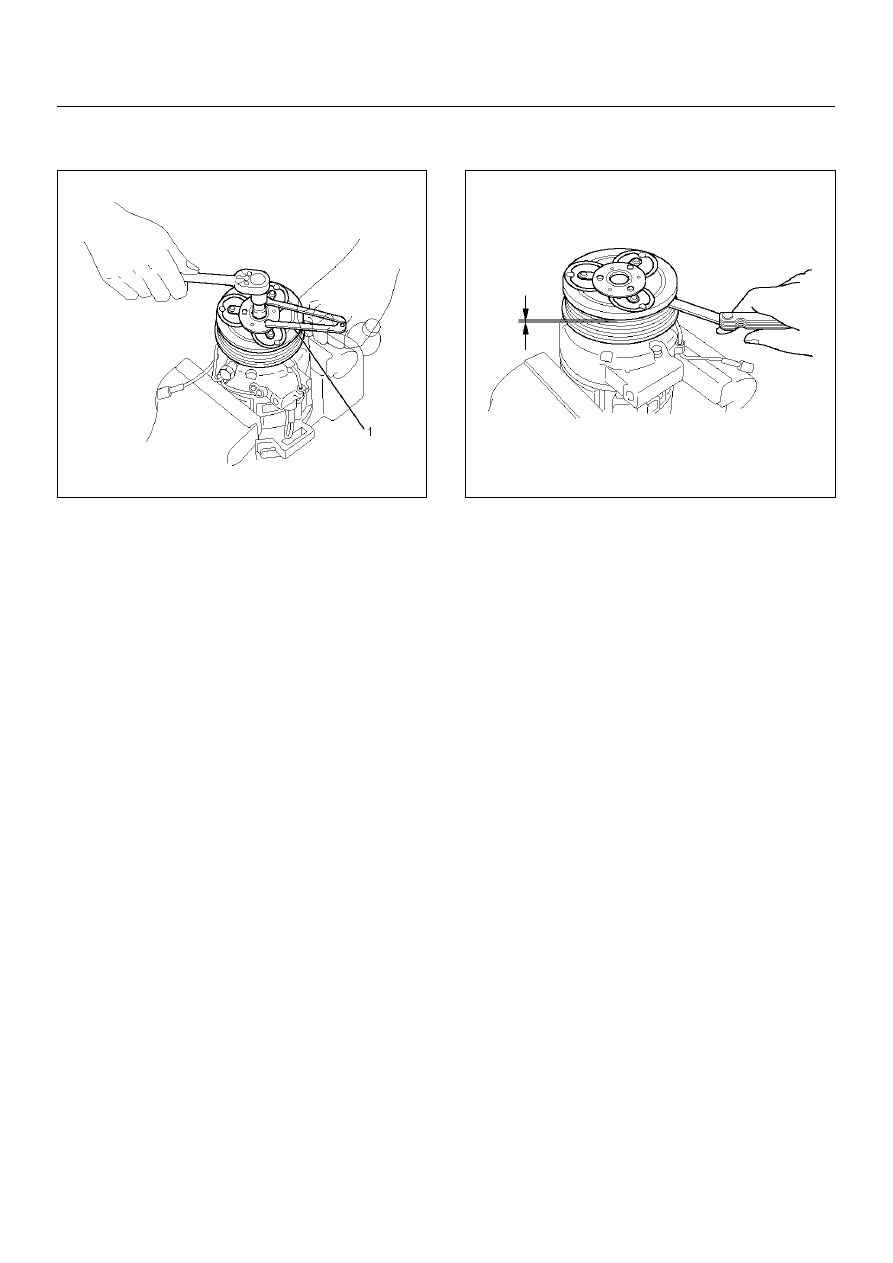Opel Frontera UE. Manual - part 26

1A–76
HEATING, VENTILATION AND AIR CONDITIONING (HVAC)
7. Install drive plate bolt by using drive plate holder
J-33939 (1) to prevent the drive plate from rotating.
901RX055
• Tighten the drive plate bolt to the specified
torque.
Torque: 13 N·m (113 lb in)
• After tightening the drive plate bolt, check to be
sure the pulley rotates smoothly.
• Check to be sure that the clutch clearance is
between 0.3-0.6 mm (0.01-0.02 in.)
871RX014
• If necessary, install adjusting shim(s).
• Adjusting shims are available in the following
thickness.
Thickness
• 0.1 mm (0.0039 in.)
• 0.3 mm (0.0118 in.)
• 0.5 mm (0.0197 in.)